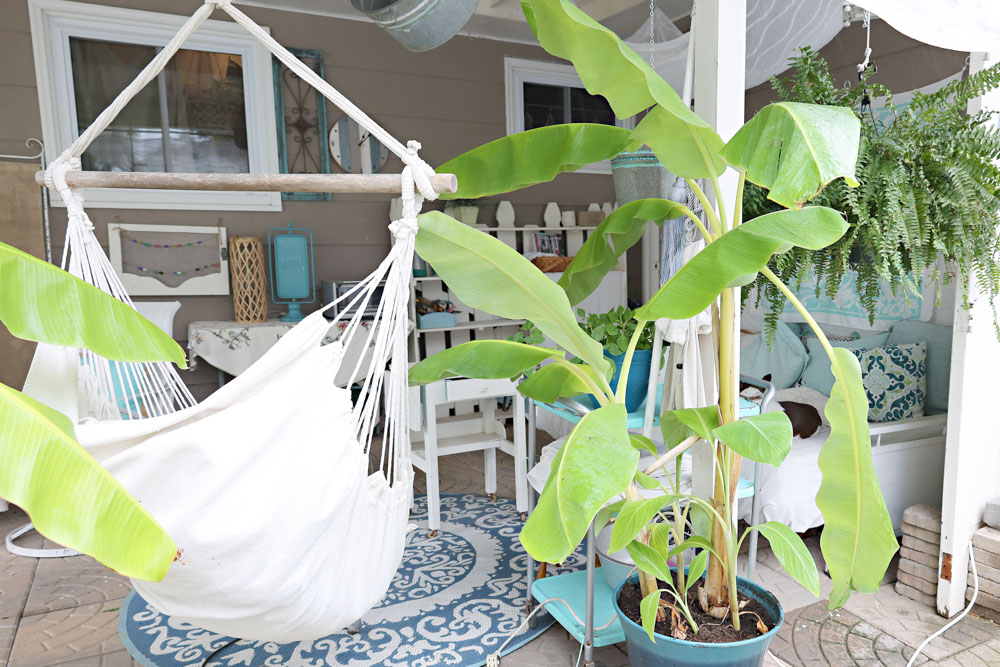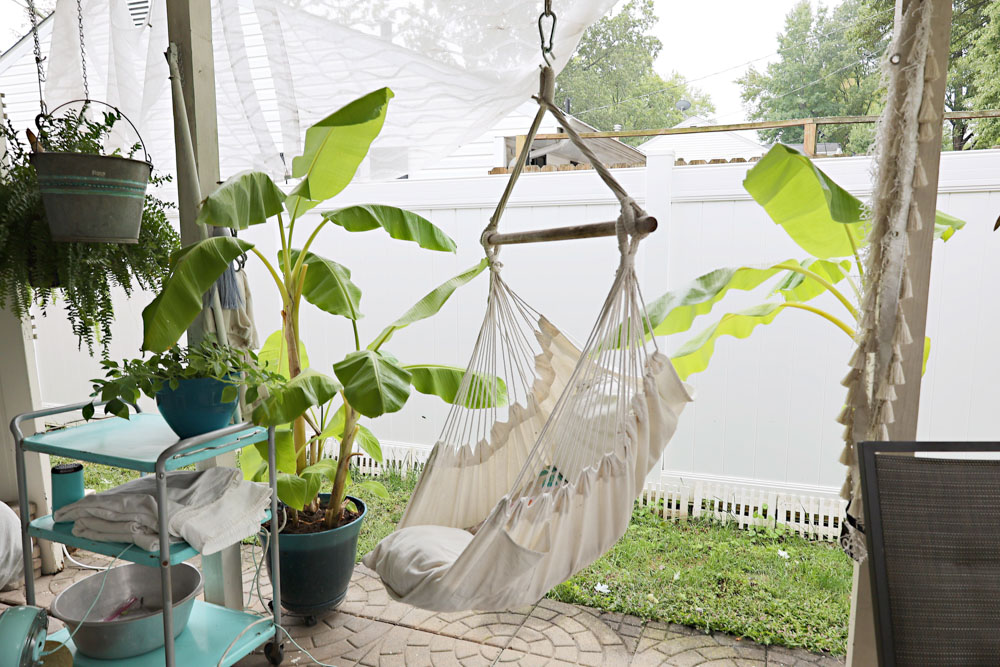My Corner Online
Musa ssp. | Banana Plants
Musa ssp. | Banana Plants
Musaceae Family (Pronounced Myuz-ay-cee-eye)
The "ssp." stands for subspecies. I do not know the subspecies of my Musa.
The name Musa comes from the Arabic word "Mouz" for banana, which comes from banan, which means "finger." The fruit is called a finger, and a bunch of bananas is called a hand.
A common one for Missouri is Musa basjoo (pronounced Moo-sah Bas-choo) and the photos online are similar to mine. It is known as the "hardy banana plant." It is from Japan.
The PawPaw is sometimes known as the Missouri Banana, but it has a scientific name of Asimina triloba and is a much different plant. It is a Missouri native plant and in the Annonaceae (Custard Apples) Family.
The plants are not called "Banana Trees" because they do not have a trunk. Rather the trunk-like stem is created when the leaves are wrapped tightly around each other. It is fun to watch these leave uncoil from the center until they are free and blow in the wind.
The Banana Plant can be grown indoors and outdoors. If grown in a pot indoors, be sure the plant gets plenty of light. Use a grow light if necessary.
I like my Banana Plants because of their palm tree likeness with the tropical foliage.
I have grown my plants in the ground before, but have found I prefer to grow them in semi-large pots because I can move them around the patio and the garden. As other plants grow and change, the pots can be moved to fill in spaces or accentuate gaps or give height where it is needed.
Some people have been successful over-wintering the plants in the ground by cutting them back and putting mulch or grass clippings or Autumn leaves over the plant for the cold months. Some people I have given my plants too have had success over-wintering here in Southeast Missouri.
The plants grown in the ground do tend to get larger than the ones planted in pots, especially if they over-winter. I have never had a banana grow in all these years! I think I would have a better chance of seeing a banana if I grew them in the ground, but my goal is not to grow the fruit.
The plants love full sun, of course, since we all know they are more commonly grown in the south. That makes sense. The plants also respond well to fertilizer.
However, since I like mine in pots, I have always dug them up each Autumn before the first frost, cut off all of the branches so only a stem and rooted bulb remain, knocked off all of the dirt, and placed them in a plastic bucket (we call them pickle buckets) under the basement stairs for the Winter. We can fit several in the buckets. We leave the baby plants attached to the parent plant. I do not water them and I keep them mostly in the dark all Winter.
In the Spring after the last frost we take them out and replant them. I dump out the dirt from the pot used last year and mix in some new soil, turning it together with my hands, and then refill my pot before planting. It never puts out a first leaf until it really warms up, usually around the first of June. So do not think that they are dead right after you plant them again. Give them time.
In the Autumn I begin to move my pots towards the house for protection from a cold snap, especially if I know the cold snap is going to happen and then I can move them under the patio or carport roof until I have time to de-pot them. Sometimes they get all lined up in a row and make a fun statement!
2024









This is what the root wad looks like after it is cleaned of dirt and ready to put in a plastic bucket for the winter months.
2017

It looks like I had 7 pots in 2017! I am slowly giving more and more away and paring it down to make it easier on this older body.
